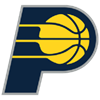I wanted to call this article Closing Time as a play off the 1998 one-hit wonder from the band Semisonic. There's just something about the "I know who I want to take me home" lyrics that resonate with how I want to attack saves in 2022 fantasy baseball drafts. Alas, I wasn't the first fantasy baseball writer to make that correlation and was informed the title was already taken. Credit to RotoWire's own Jeff Erickson for his creative genius behind this awesome title that I'm proud to introduce: Closer Encounters.
Before we preview the fantasy saves landscape for 2022, let's review last season. In 2021, 49 percent of MLB wins resulted in a save, which aligns with the league's average save percentage the last five years.
Year | MLB Total Saves | MLB Total Wins | MLB Save % | Number of Pitchers with a Save |
|---|---|---|---|---|
2021 | 1,191 | 2,429 | 49.0% | 198 |
2020 | 422 | 898 | 47.0% | 131 |
2019 | 1,180 | 2,429 | 48.6% | 199 |
2018 | 1,244 | 2,431 | 51.2% | 165 |
2017 | 1,179 | 2,430 | 48.5% | 162 |
TOTAL | 5,216 | 10,617 | 49.1% |
While the total number of saves per season has been fairly steady, more teams have recently shifted away from using a traditional closer. This makes our job projecting save totals and your job finding reliable save sources much harder. You'll notice the number of pitchers who recorded a save spiked in 2019 and was nearly matched last season, with 198 pitchers recording one or more saves. Of those 198 pitchers, only nine (4.5 percent) racked up 30
I wanted to call this article Closing Time as a play off the 1998 one-hit wonder from the band Semisonic. There's just something about the "I know who I want to take me home" lyrics that resonate with how I want to attack saves in 2022 fantasy baseball drafts. Alas, I wasn't the first fantasy baseball writer to make that correlation and was informed the title was already taken. Credit to RotoWire's own Jeff Erickson for his creative genius behind this awesome title that I'm proud to introduce: Closer Encounters.
Before we preview the fantasy saves landscape for 2022, let's review last season. In 2021, 49 percent of MLB wins resulted in a save, which aligns with the league's average save percentage the last five years.
Year | MLB Total Saves | MLB Total Wins | MLB Save % | Number of Pitchers with a Save |
|---|---|---|---|---|
2021 | 1,191 | 2,429 | 49.0% | 198 |
2020 | 422 | 898 | 47.0% | 131 |
2019 | 1,180 | 2,429 | 48.6% | 199 |
2018 | 1,244 | 2,431 | 51.2% | 165 |
2017 | 1,179 | 2,430 | 48.5% | 162 |
TOTAL | 5,216 | 10,617 | 49.1% |
While the total number of saves per season has been fairly steady, more teams have recently shifted away from using a traditional closer. This makes our job projecting save totals and your job finding reliable save sources much harder. You'll notice the number of pitchers who recorded a save spiked in 2019 and was nearly matched last season, with 198 pitchers recording one or more saves. Of those 198 pitchers, only nine (4.5 percent) racked up 30 saves. It was the first full season since 1982 that a pitcher failed to reach 40 saves.
One explanation for the trend of widespread saves is teams are being more cautious with pitch counts and work loads of their relievers. While I haven't studied this extensively, teams generally rest their relievers after they've pitched two or three days in a row. Pitching three times in four nights generally warrants a day off as well. One of the features of our newly re-designed Closer Grid shows team bullpen usage over the last seven days. This gives fantasy managers, particularly those who play in leagues with daily lineups, great insight as to who might be receiving a night off among rostered relievers.
To further illustrate the trend, five teams last season had at least 10 pitchers record a save, including the Rays (14 pitchers), Cubs (12), Reds (10), Dodgers (10) and Red Sox (10). We've come to expect this from Tampa Bay, which has had 10-plus pitchers log saves three consecutive years, even during the 60-game season. Cincinnati struggled to find a consistent closer all last year, while Boston and Chicago used primary closers early before turning to committees once Matt Barnes and Craig Kimbrel lost the role. The Dodgers were somewhat of a surprise considering Kenley Jansen had been Los Angeles' primary closer for the last decade and continued his dominance in 2021 aside from an elevated walk rate. But keep in mind the Dodgers had the second-most wins (106) in baseball and thus more save opportunities overall. Their 56 saves as a team — of which Jansen recorded 38 as the primary closer — were tied for most in the league with San Francisco.
Furthermore, we're seeing more managers deploy their best relievers in the most high-pressure situations, which don't always occur in the ninth inning. While this logic makes sense, it's frustrating for fantasy managers. Many times throughout 2021, high-leverage relievers like Kendall Graveman or Tejay Antone — guys we thought were the closer for their respective teams — earned a save one night, only to work a high-leverage spot in the sixth inning of a tie game during their next appearance. This created very difficult and very expensive FAAB or waiver decisions.
With so much data and new metrics available, teams are much smarter with how they construct their bullpen and deploy their relievers. We can pretty easily tell how a hitter performs against pitchers of certain handedness, but teams are factoring in how hitters perform against different types of pitches, velocities and arm angles (among many other things) into their late-inning pitching game plans.
So, after all that, how do we approach saves in 2022 fantasy baseball drafts?
I'll do my best to help answer that question these next few months. For starters, it depends on the type of league you're in.
In the NFBC Draft Champions or NFBC 50 formats — 50-round draft-and-hold leagues with no in-season pickups and overall components — the ADP of top-end closers has risen quite significantly compared to last year. Securing saves, especially at this point of draft season with so many closer roles unsettled, has become a priority for draft-and-holders. I'll point you to Todd Zola's recent Z Files for a deeper dive into closer ADP in this format.
In NFBC Main Event or Online Championship leagues — 30-round drafts with weekly in-season pickups and overall components — you might take a more flexible approach to drafting closers since you can add and drop players and FAAB for saves during the season. This isn't always easy to pull off, but it can be done well and done cheaply if you're paying close attention to things like reliever performance, usage trends, player contract status and the team's competitive standing near the trade deadline. One might notice a reliever who started the year pitching the seventh inning is more regularly pitching the eighth with one- or two-run leads and speculate for saves accordingly if the closer is showing signs of regression.
Another example to share comes via RotoWire friends Phil Dussault and Rob DiPietro, who were the only NFBC players to speculate on Kyle Finnegan as a potential saves source prior to last year's trade deadline. They recognized Washington wasn't in contention for the playoffs and likely would trade impending free-agents Max Scherzer, Brad Hand and Daniel Hudson. After reviewing who might be next in line for saves, they were rewarded once those trades came to fruition and Finnegan became Washington's closer for a decent chunk of the season.
I'm not as familiar with NFBC Cutline leagues — 42-round drafts with two in-season FAAB periods and an overall component — but my understanding is closers aren't as valuable as starting pitchers due to the points-based, best-ball scoring format.
In my next edition of Closer Encounters, I'll share my initial closer rankings for 2022, as well as some closer targets and fades from the drafts I've participated in thus far.




































